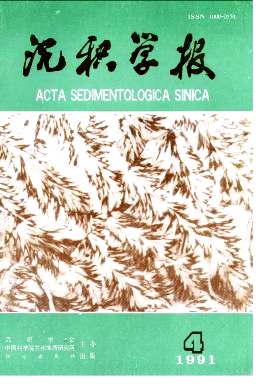The Sedimentary Environment of Ceshui Formation and Its Control on Coal Beds, Hunan Province
- Received Date: 1989-06-20
- Publish Date: 1991-12-10
Abstract: Ceshui Formation is an important coal-bearing stratum of Carboniferous in Hunan province. It mainly consists of fine quartz sandstones, quartz siltstones, mudstones, some quartz pebble conglomerates and carbonate rocks with coal beds. It can be divided into two parts, the lower contains 1-7 layers of coals, and the no coal beds in the upper . The coals No.3 and No.5 are the main mining beds and the others are local minable or unminable ones. The synthetical study of petrology, palaeontology, trace fossils, geochemistry show that this formation is deposited in the barrier bar-tidal flat-lagoon depositional systems. The subenvironments are freshening lagoon, brackish lagoon, transgressive barrier bar, regressive barrier bar, tidal channel, intertidal flat, swamps, littoral and shelf. The sedimentary environments are related closely to the coal beds. Three types of swamps exist in Ceshui Formation; The first is located in the slope of back barrier bar, the seams are thiner and discontinous, the content of sulfur ranges from 3.5% to 5%; The second is formed by lagoon fill, the coals vary greatly in thickness, from zero to more than 10 m, generally 0.5m to 3m, the content of sulfur is 1.3% to 9.7%, this type of coal beds split or want out in short distance, and their bottom is silty mudstone with large amount of siderite noddles; The last type of swamp exists in the intertidal flat with complicated structure, its variation in thickness is slight, from 1.5m to 2.5m, the content of sulfur ranges from 1% to 5.3%, generally 1% to 3%. The local coal beds often washed away by tidal channels. The thickness of coal has a close relation to the tidal channels, the thick coal beds located at the thiner channel sandstones or close to the dendritic channel sandstones.
| Citation: | Liu Qinfu, Zhang Penfei. The Sedimentary Environment of Ceshui Formation and Its Control on Coal Beds, Hunan Province[J]. Acta Sedimentologica Sinica, 1991, 9(4): 96-104. |






 DownLoad:
DownLoad: